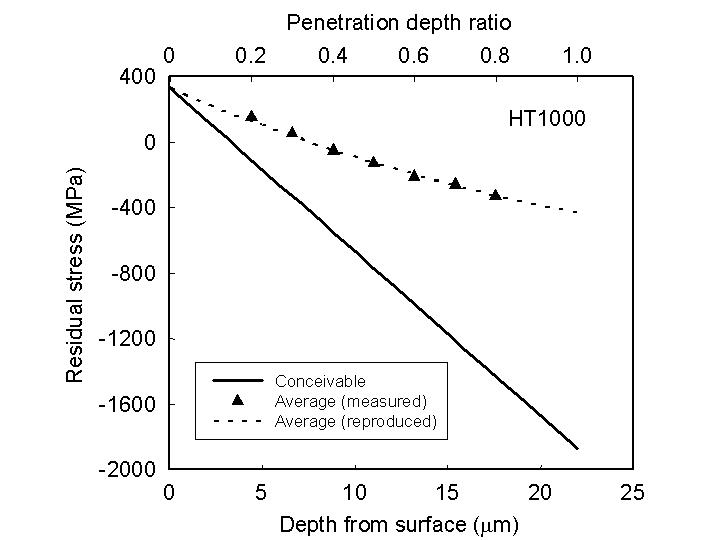Non-destructive measurement of residual stress depth profile on steel treated by Laser-Peening
Inquiry number
SOL-0000000909
Beamline
BL19B2 (X-ray Diffraction and Scattering II)
Scientific keywords
| A. Sample category | inorganic material |
|---|---|
| B. Sample category (detail) | metal, alloy |
| C. Technique | X-ray diffraction |
| D. Technique (detail) | wide angle scattering |
| E. Particular condition | surface, room temperature |
| F. Photon energy | X-ray (4-40 keV) |
| G. Target information | dislocation, strain |
Industrial keywords
| level 1---Application area | mechanics, construction, industrial material |
|---|---|
| level 2---Target | Steel |
| level 3---Target (detail) | |
| level 4---Obtainable information | residual stress |
| level 5---Technique | diffraction |
Classification
A80.20 metal ・material, M10.80 stress strain
Body text
In this solution, X-ray diffraction was applied to steel treated by laser-peening to analyze depth profile of residual stress at the surface. By controlling incident and take-off angle of X-rays to the sample surface, penetration depth of X-ray is tuned. These data reveal the dependence of the process on the depth profile of residual stress at the surface treated by laser-peening.
Depth profile of residual stress in steel treated by laser-peening
Source of the figure
Bulletin from SPring-8
Bulletin title
SPring-8 Experimental Report No.13 (2004A)
Page
p.111
Technique
X-ray residual stress measurement is performed by observing dependence of scattering angle on sample orientation to incident X-ray. This technique enables non-destructive observation of depth profile of residual stress in sample.
Source of the figure
No figure
Required time for experimental setup
9 shift(s)
Instruments
| Instrument | Purpose | Performance |
|---|---|---|
| Multi-axis diffractometer | X-ray diffraction measurement | 4axes and 2axes |
References
Related experimental techniques
Questionnaire
This solution is an application of a main instrument of the beamline.
Ease of measurement
Middle
Ease of analysis
Middle
How many shifts were needed for taking whole data in the figure?
Four-nine shifts
